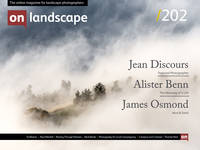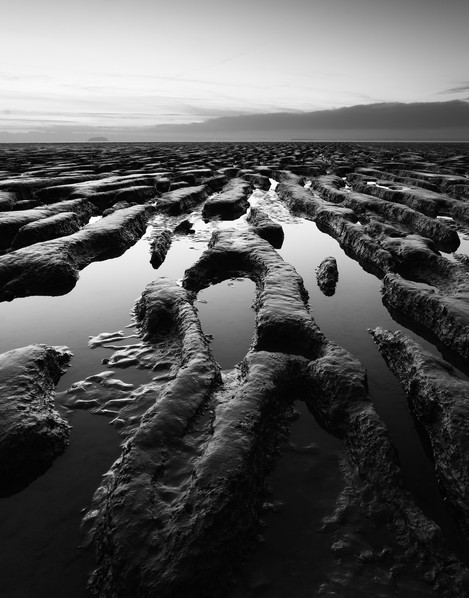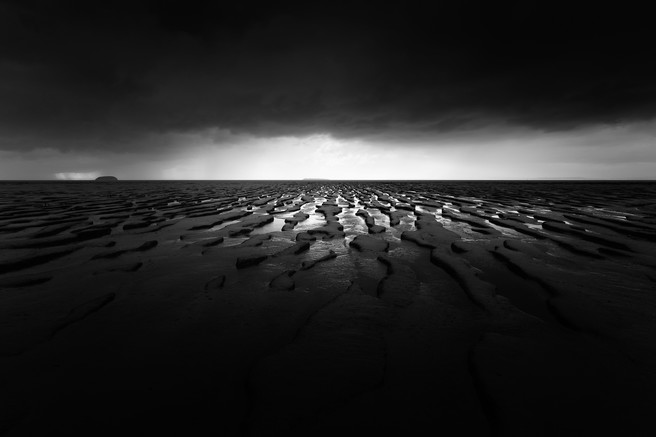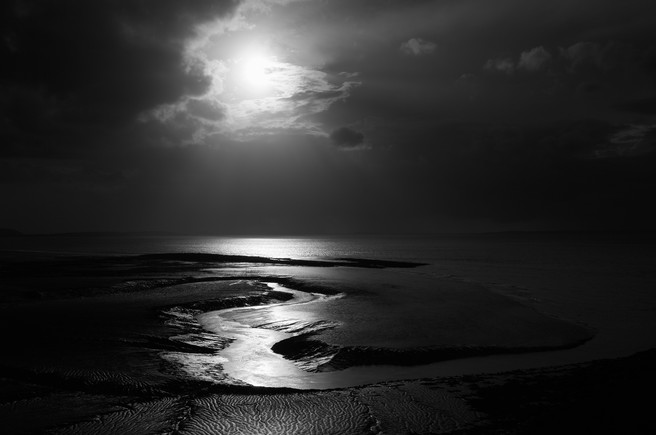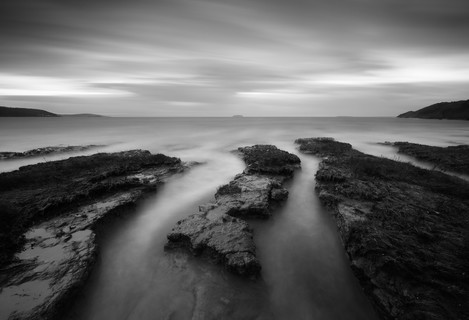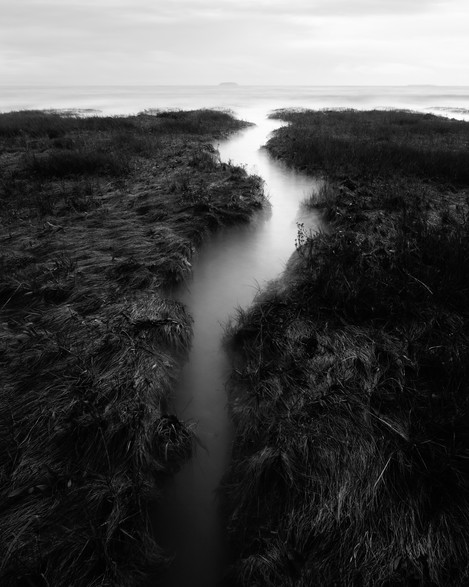A photography project of the Bristol Channel

James Osmond
Professional outdoor photographer producing stock photography and commissioned photography for magazines and other clients. Also, an amateur historic house restorer living in Bristol with wife and three children.
This project began several years ago when I first noticed the notation ‘Mud & Sand’ on an OS map of the Bristol Channel. I couldn’t work out why these beaches should be so muddy and I was curious to find out what they looked like.
To be honest, my first impressions were not very positive. As a stock photographer, I am aware that I often look to idealise the landscape in my work, and most people think of idyllic beaches as having golden sand and bright blue sea. The mudflats and brown sea that typify the beaches of Somerset and Newport, in particular, do not fit this vision.
It was only when I was listening to someone express their strong opinion about how ugly they found the Somerset coast that something changed. We Osmonds can be contrary folk; prone to exploring different angles when a strong opinion is presented to us (my younger son, in particular, is a master at this). I was suddenly determined to explore this subject and prove them wrong.
The reason these mudflats exist is that the Bristol Channel, whose waters are rich in sediment from the several major river systems that flow into it, deposits the mud in the vast inter-tidal zones created by its famously large tidal range. But that is not all. The mudflats are at the centre of a constant battle between the erosive forces of tide and weather, and the stabilizing forces of halophytic plants trying to establish salt marshes. The huge array of patterns created by these opposing forces, in addition to the wet surfaces that reflect whatever drama is playing out in the sky, are what make the landscape here utterly intriguing.
It was perhaps because of the wet, reflective surfaces that I acquired a taste for those vile winter days with showers blowing in from the sea. On such days, the light is constantly changing and in conditions like that, photos just appear instantly out of nowhere and are gone the next second. This is where I find photography as a medium really comes into its own, because it can capture brief moments like that and the satisfaction in doing so, as well as that feeling of having endured tough conditions, really appeals to me. I also found quite early on that the pictures I was getting in those conditions were very monochromatic, so it was a natural decision to continue the project in black and white.
The biggest challenge with this project has been simply getting access to the subjects I’ve wanted to photograph. You have to take great care as the signposts on the beaches here all attest to. You cannot simply walk to the sea at low tide otherwise you’ll get stuck. I’ve had to think creatively and use stable ground in whatever form it comes, be that as man-made concrete flood defences or patches of salt marsh, whose root network stabilizes the mud enough to walk on. There has been an awful lot of studying maps, studying tide tables, visiting and revisiting locations in order to get all of the elements aligned for the pictures I wanted. As a result, I have come to know certain key locations such as Sand Bay and the River Parrett Estuary extremely well.
Once I had a collection of images that sat together coherently, I started to think about publishing a book of the project. I’d had a book published a couple of years previously by Frances Lincoln, but that was more a celebration of Somerset as a region. This was a very different body of work focusing on an unusual subject and its aesthetic qualities when photographed in a particular way. Not many publishers really dealt with this sort of photography but I’d been collecting some of the magnificent titles released by Triplekite Publishing, particularly David Baker’s Sea Fever, and I thought I’d approach them.
You get so many rejections as a photographer that it’s always a bit of a surprise when someone says yes. I had to redouble my efforts that winter and get out at every opportunity to make sure I had enough depth of coverage in time for publication. Although Triplekite is sadly no longer publishing, there are still copies of Mud|Sand available online both in the UK and America, as well as signed copies direct from myself (jamesosmond.co.uk/art). Book publication usually signifies the end of a project but I’m never able to lay anything completely to rest and I do continue to revisit the Somerset coast working in both colour and monochrome.
Do you have a project that you are working on that you'd like to write an article for us about? We'd love to hear from you, so please do get in touch.

